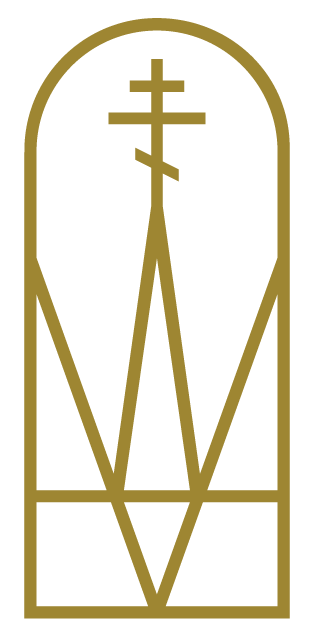Feastday Of The Protection Of The Most Holy Mother Of God
Protection of the Most Holy Mother-of-God
Hebrews 9:1-7; Luke 10:38-42; 11:27-28
In 903, Byzantium was in great danger as the Saracens (nomadic Arabs) approached Constantinople. (In the Middle Ages, all Arabs and even all Muslims were called Saracens). An All-Night Vigil service was being conducted in the Vlakhorn temple of Constantinople.
At that time, Saint Andrew was praying in that church with his student Epiphanius for the salvation of the city. Their prayer was sincere, danger was near. And here appeared the Blessed Virgin Mary accompanied by John the Baptist and John the Theologian and other saints in white clothes, moving in the air, from the entrance door to the pulpit, kneeling before the altar. The Blessed Virgin Mary prayed for a time, then removed a large veil from her head and, holding it in both hands, spread it over the people. After the departure of the Holy Mother-of- God, the veil gradually became invisible.
This apparition and display in the temple before people--that the Blessed Virgin prays and intercedes for people and shields them with her veil - I protect them, - protects them from the power of the enemy – is what constitutes the meaning of the feast of the Protection of the Blessed Virgin Mary.
The Blessed Virgin Mary is not God, but by her appearance she showed that she cares for people who need God's help. Moreover, after her appearance in the Vlakhorn temple, the Saracen troops, hostile to Christians, retreated from Constantinople. The Byzantines did not have an army of their own that could successfully defend their city, so the retreat of the forces hostile to the Christians was accepted as God's grace revealed through the patronage-protection of the Blessed Virgin Mary.
Together with the acceptance of Christianity from Byzantium, our ancestors also accepted the above-mentioned pious account of that historical battle, and about the appearance of the Mother-of-God in defence of Christian believers.
In Ukraine, from the very beginning of the adoption of Christianity, our ancestors highly revered the Most Holy Ever-Virgin Mary, built churches in her honour, glorified her as the protector of Orthodox Christians. The guardianship of the Blessed Virgin Mary over those people who were in danger from non-Christian Mohammedans was especially and separately celebrated.
Ukrainian lands, especially the lands of southern Ukraine, were attacked by Tatar hordes for many centuries. In order to protect themselves, their people who lived on those lands, who settled there seeking freedom from lordly enslavement, the Cossacks were formed. And this is whom the Cossacks took for their patron saint, the Most Pure Virgin Mary, noting her guardianship-protection over Orthodox Christians.
From the very beginning of the existence of Zaporizhzhya Sich, the temple church in Sich has always been the Church of the Intercession of the Holy Mother-of God. Of course, there were temples in honour of the Intercession of the Most Holy Mother-of-God in other areas, too, and outside Ukraine, mainly among other Slavic peoples, but the Zaporozhian Cossacks considered their entire Cossack state to be under the patronage of the Mother-of-God. Consequently, the Feast of the Intercession (Protection) of the Most Holy Mother of God among the Ukrainian Cossacks, and later in the south of Ukraine in general, was considered one of the biggest annual church holidays.
Whenever the Zaporizhzhya Sich was relocated to another area, the icon of the Most Holy Mother-of-God was the first to be moved. And when the Muscovite army destroyed the Zaporizhzhya Sich, Taras Shevchenko wrote:
"As the Zaporozhians left,
Great Meadow and Mother Sich,
They took the Mother of God with them,
And nothing else did they take.In a pitched tent
They placed Image of the Most Holy,
And secretly prayed..."
Silver, gold, herds of horses, expensive land - everything was left by the Cossacks, but the icon of the Protection of the Most Holy Mother-of-God, they took with them. When that icon was present, that is where another Sich could be – a centre of Cossack life.
Catholics do not have this national-Cossack holiday, as there have never been Catholic Cossacks. In the song of praise, voiced on that day, the Orthodoxy of that holy day is clearly emphasized:
"Today we, Orthodox people, joyfully celebrate..."
Let us joyfully celebrate and glorify the Immaculate Virgin Mary, and ask her to continue protecting and defending our people from non-Christians and unbelievers.
Amen.
Very Rev. Fr. Taras Slavchenko
Taras Slavchenko was born on March 8, 1918 in Nikopol, Dnipropetrovsk region in Ukraine. After graduating from school and the Pedagogical College, he entered the language and literature faculty of the Scientific Pedagogical Institute. Having successfully completed it in 1938, he served as a teacher in a secondary school.


